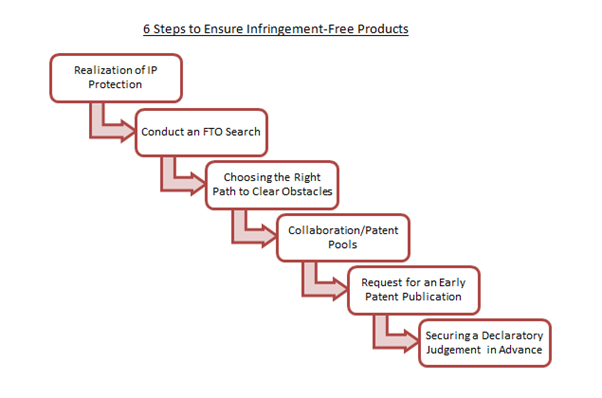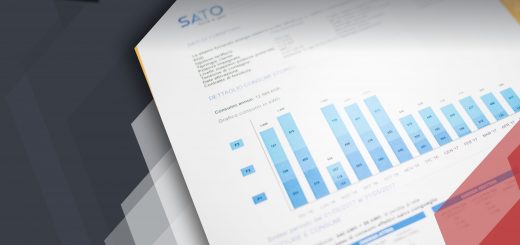6 Secret Strategies to Protect your Products from Intellectual Property Infringement
In the dynamic landscape of business, where a single misstep can trigger a legal dilemma, draining resources and tarnishing reputations, safeguarding against Intellectual Property Infringement is not just a choice—it’s a necessity. Intellectual property battles can cripple even the mightiest, especially small and medium-scale businesses. With rising competition, the number of IP lawsuits is reaching new heights. Why gamble with fate when you can ensure your products are infringement-free right from the beginning? Delve into this article for a guide that unveils six steps to fortify your creations against infringement.
Table of Contents
The Stakes are High: Why Ensuring Infringement-Free Products Matters
In the ruthless business arena, even giants like TVS Motor Company have stumbled, facing colossal losses due to negligent intellectual property infringement. The message is clear—implementing robust strategies during R&D and product development is your safety net. It’s not merely about avoiding lawsuits but protecting your company’s time, money, and reputation. So, why play with fire when you can ensure your products are infringement-free from the get-go?
Understanding Risks and Consequences: The Price of Misstep
Navigating the complexities of the Intellectual Property demands a thorough understanding of its landscape. From the nuances of copyright and trademark law to the fortified protection of patents and trade secrets, the threat of intellectual property infringement casts a foreboding shadow. However, armed with knowledge, one can skillfully navigate these challenges, much like sharpening a sword before battle. Nevertheless, caution is paramount: missteps can lead to severe consequences. Financial ruin, legal entanglements, and reputational damage await those who venture unprepared. In the realm of intellectual property, ignorance provides no refuge; it only leads to inevitable downfall.
The Blueprint for Success: 6 Steps to Protecting Your Products from Intellectual Property Infringement
Taking proactive measures to avoid potential IP infringement issues is vital for developing new products and services legally and smoothly. Here are six essential steps companies can take to ensure their products emerge unscathed from the realm of infringement:

Realization of IP Protection
The journey begins with awareness. Recognize the significance of safeguarding your intellectual property by enlisting the expertise of professionals well-versed in the ever-evolving realm of intellectual property rights. These guardians of innovation ensure your creative endeavors remain shielded from infringement, empowering you to pursue your entrepreneurial dreams with peace of mind and unwavering focus.
Conducting a Comprehensive Freedom-to-Operate (FTO) Search
Before launching your masterpiece, embark on a strategic search mission. Identify potential obstacles through FTO searches, ensuring your product is free to shine without legal shadows. A thorough freedom-to-operate search empowers entrepreneurs to identify potential infringements early in the product development process, enabling timely course corrections and preemptive action. By proactively addressing IP concerns, businesses can minimize the risk of costly legal disputes and maintain their competitive edge in the marketplace.
Choosing the Right Path to Clear Obstacles
When faced with the specter of IP infringement, chart a course of action that aligns with your business objectives and risk tolerance. Whether through licensing agreements, technology acquisitions, or strategic partnerships, myriad paths lead to IP compliance. By weighing the pros and cons of each option and consulting with legal counsel, one can make informed decisions that safeguard their interests and preserve their freedom to innovate.
Forge Alliances Through Collaboration/Patent Pools
Strength lies in unity. Align with like-minded innovators to unlock new opportunities and surmount shared challenges. By participating in patent pools and collaborative research initiatives, one can leverage the collective expertise of industry peers to accelerate innovation and propel market growth. Cultivating a culture of collaboration and knowledge sharing empowers businesses to bolster their competitive advantage, reduce costs, enhance efficiency, and erect a bulwark against infringement claims, positioning themselves for long-term success.
Seize Early Opportunities with Patent Publication
Time is of the essence. If your creation is novel and unprotected, pursue a patent without delay. Early publication could be the key to warding off potential infringement disputes. By proactively engaging with patent offices and regulatory authorities, businesses can expedite the patenting process and fortify their intellectual assets before competitors can gain ground.
Proactive Defense with Declaratory Judgments
Be proactive. In the realm of IP disputes, proactive measures can mean the difference between success and failure. By securing a declaratory judgment in advance, entrepreneurs can preemptively address potential legal challenges and mitigate the risk of costly litigation. Whether through negotiation, mediation, or alternative dispute resolution mechanisms, businesses can protect their interests and preserve their ability to innovate without fear of reprisal.
Final Reflections on Intellectual Property Infringement
In the dynamic landscape of modern business, safeguarding intellectual property isn’t merely a choice—it’s a strategic imperative. Intellectual property infringement poses significant risks to companies of all sizes, potentially resulting in financial losses, legal battles, and reputational damage. By proactively implementing measures to protect your products from infringement, you’re not just defending your current assets; you’re also strengthening the foundation of your business for future growth and success.
At Sagacious IP, we understand the critical importance of intellectual property protection. Our expert team is dedicated to assisting businesses like yours in navigating the complexities of IP infringement disputes. From conducting comprehensive searches to providing strategic guidance and advice, we’re here to support you every step of the way.
Our Freedom-to-Operate searches and invalidity searches serve as your secret weapons in the battle against intellectual property infringement disputes. Don’t wait until it’s too late to take action. Protect your intellectual property now to ensure the long-term success of your business. Reach out to us today at [email protected] to discover how we can help you safeguard your intellectual property future.
-Harsha Agarwal (Life Sciences and Chemistry Team) and the Editorial Team




